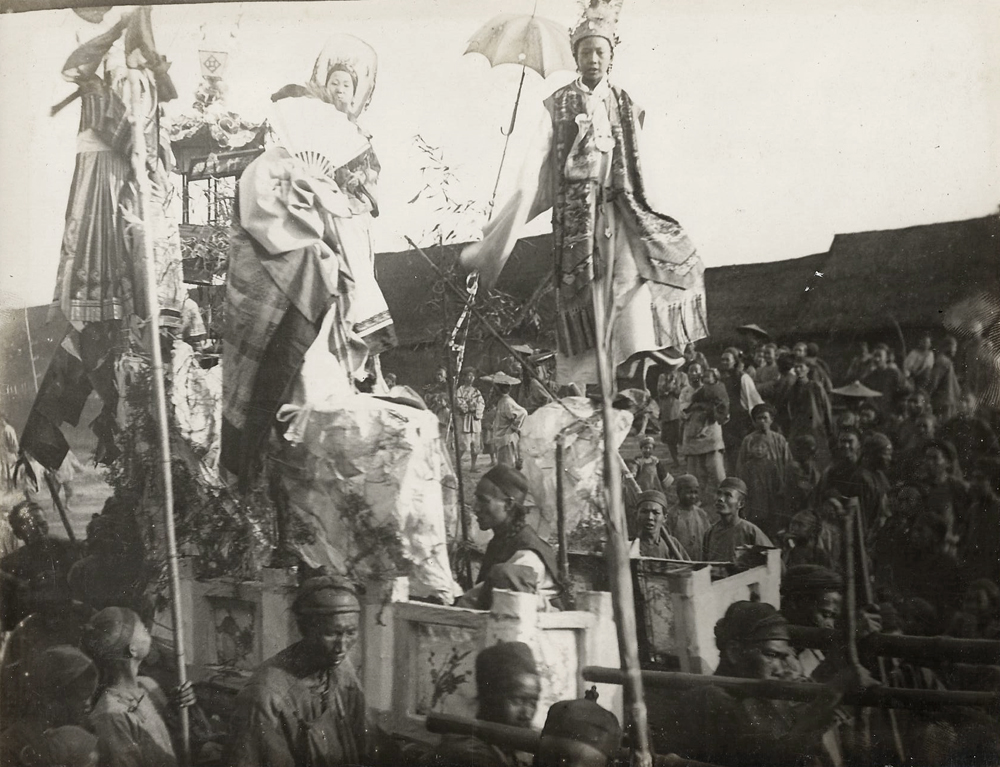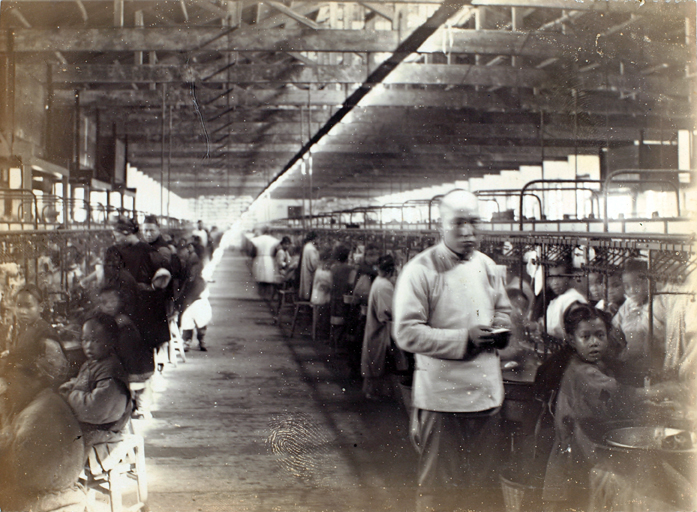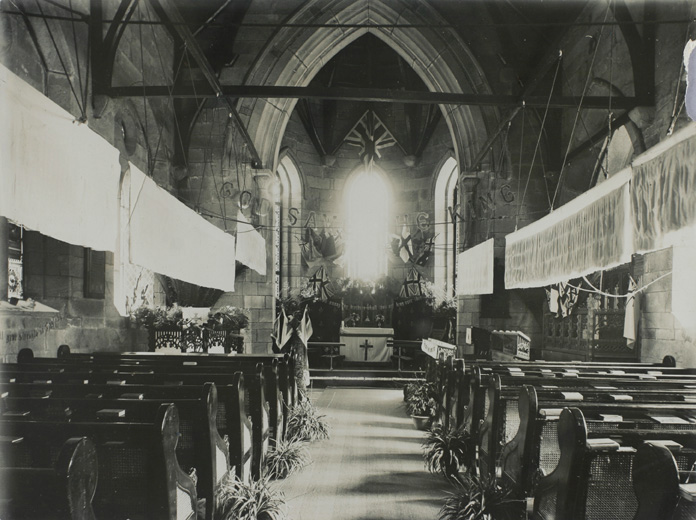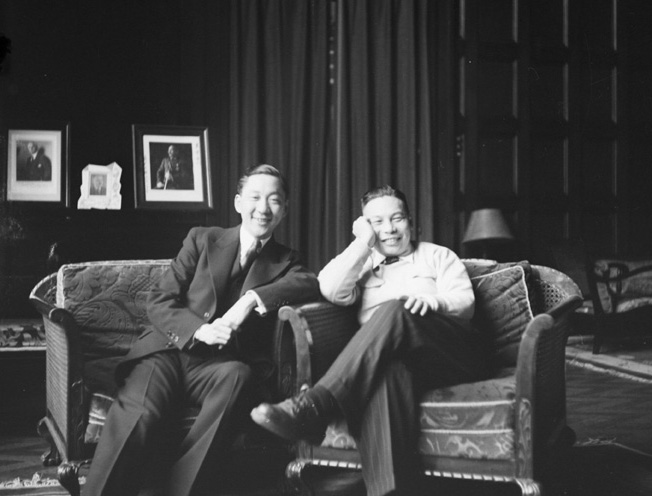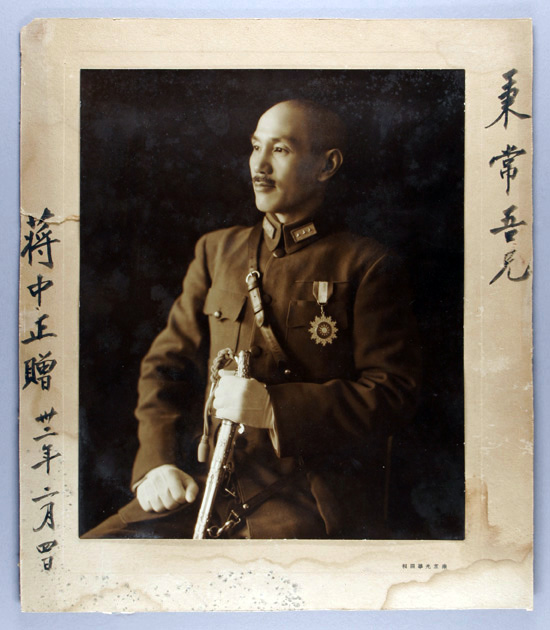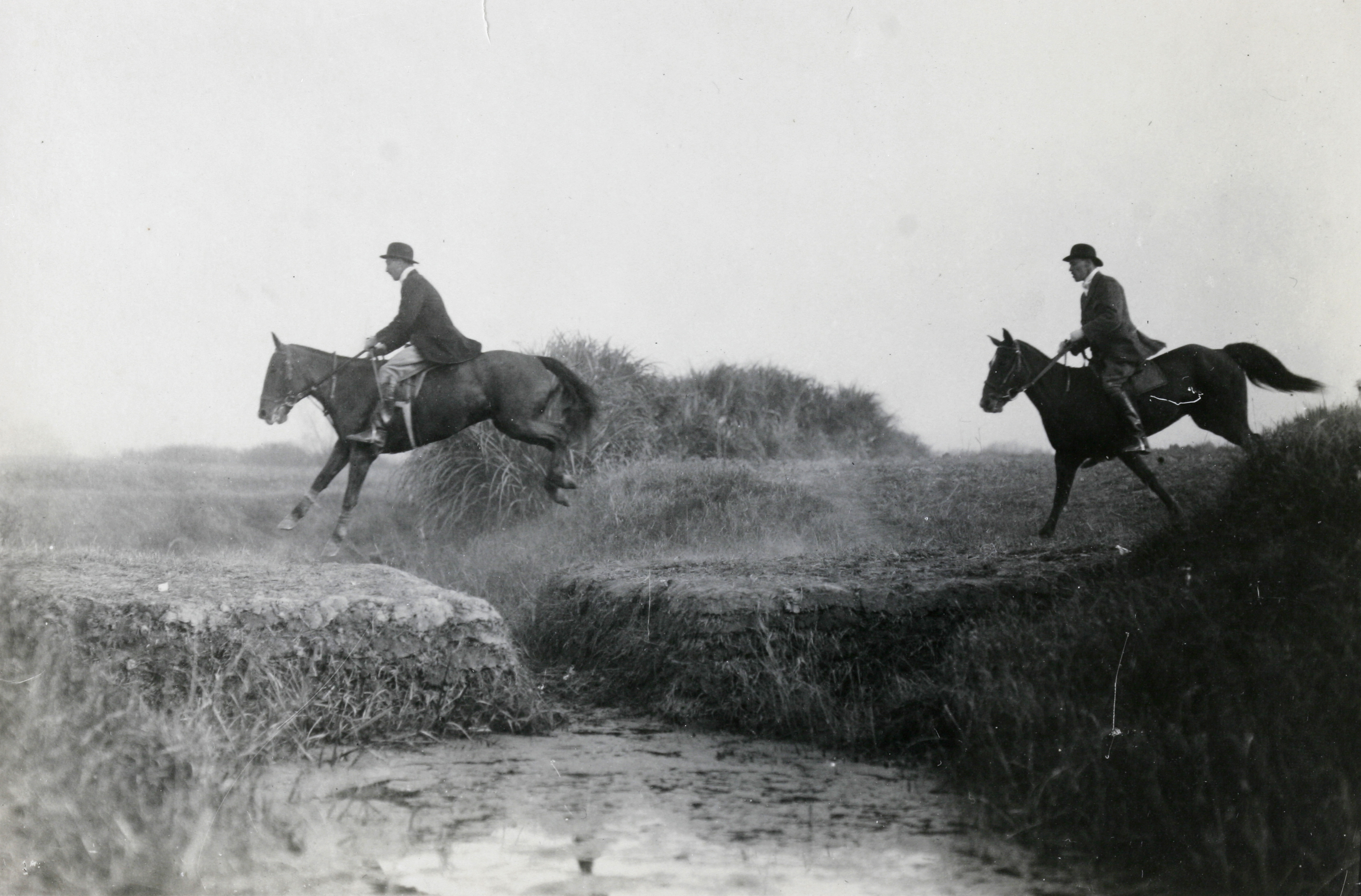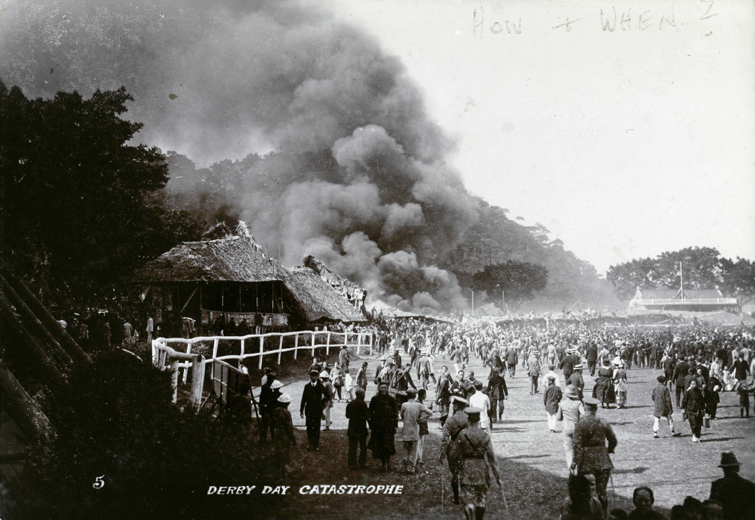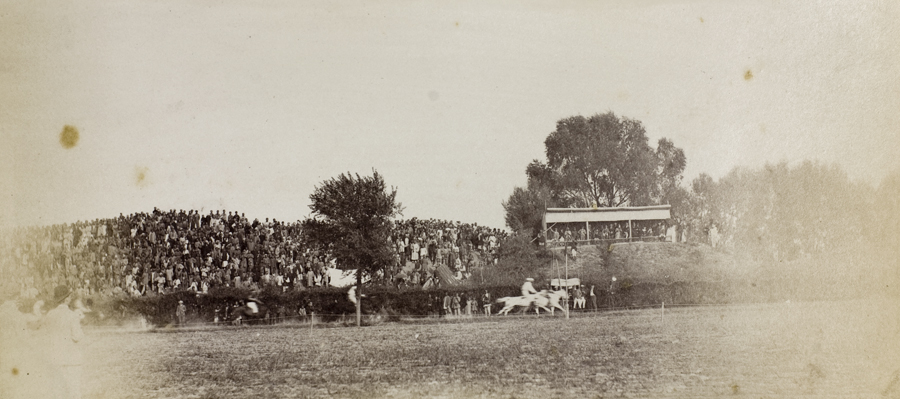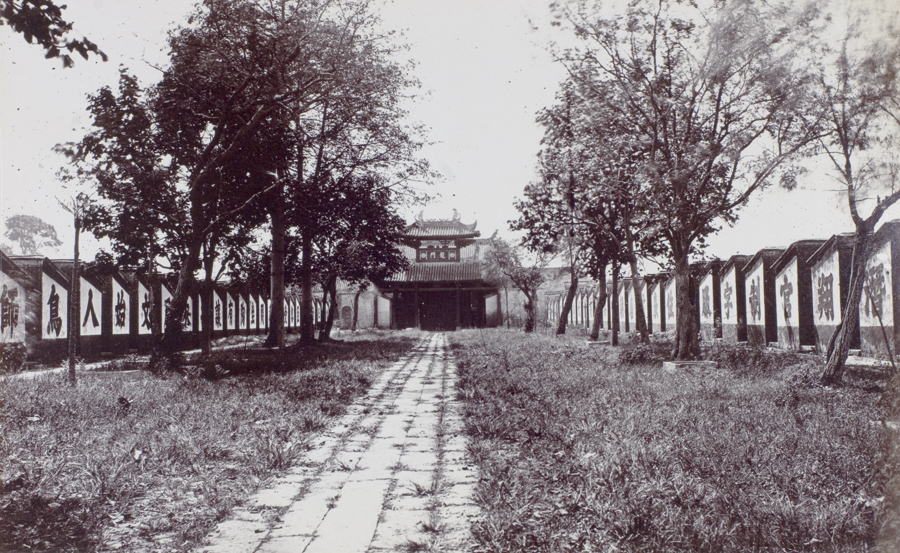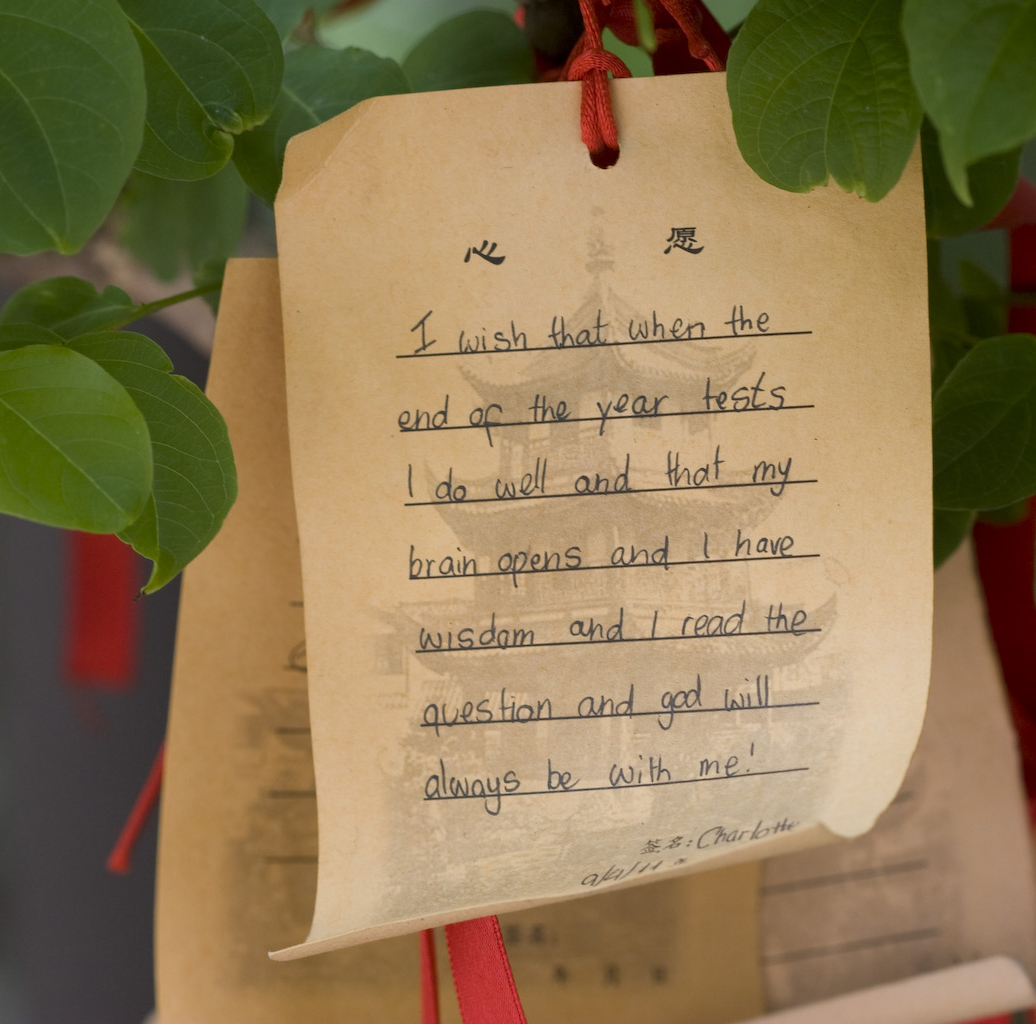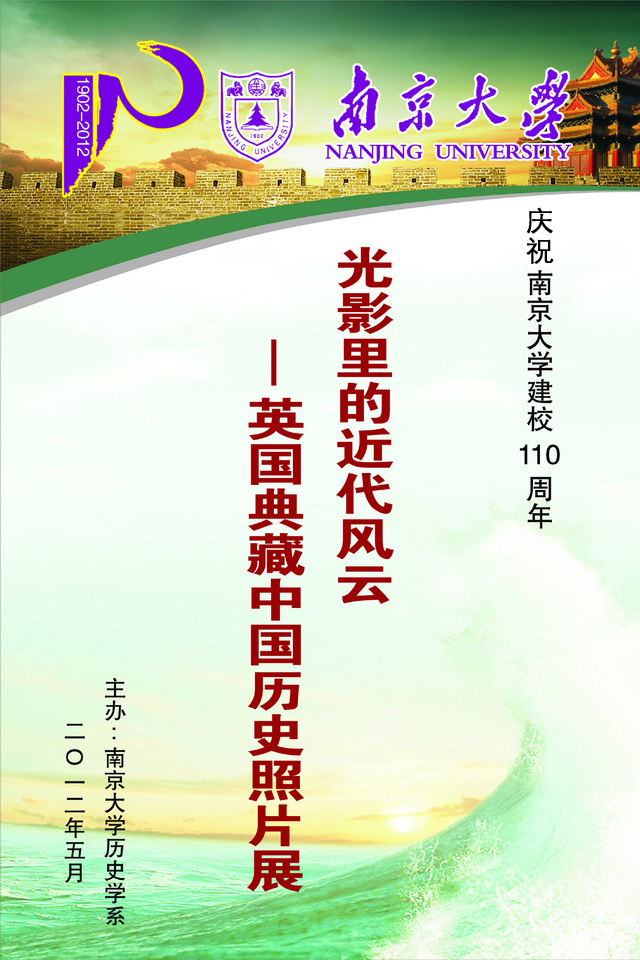Frederic William Carey served in the Chinese Maritime Customs, from 1891 to 1928. When stationed at Szemao in the province of Yunnan around the turn of the century, he studied the area and the multivarious tribes peoples, becoming an authority. Carey (by then Commissioner of Customs) gave a lantern slide lecture in Ningbo on 9 February 1922, on ‘Native Life on the Burma-Yunnan Frontier’. Various items, including some of his lantern slides, photos, a pamphlet (‘With a Camera in Yunnan’, London, 1903) and a map are held at the Royal Geographic Society, London (Search for F W Carey at: http://www.rgs.org/OurWork/Collections/Catalogue+Search/CatalogueSearch.htm).
This photo (FC01-23) shows two children precariously held aloft on a float in procession in Szemao, Yunnan – the parasol making a pointed punctum.

